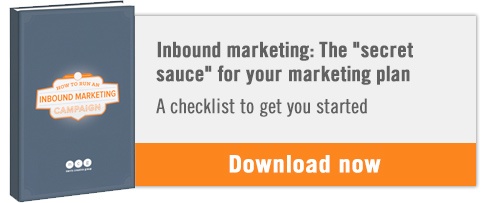Brand awareness, resonance and relevance
I am indebted to Scott Bedbury and his fascinating book A Brand New World (Viking, 2002) for his thoughts of brand resonance and brand relevance, two concepts marketers and advertisers must take seriously. These concepts provide a springboard for my thoughts here.
At Morris Creative, we like to say that your brand is a promise you make to your customers. You must deliver on that promise time and again. Companies that move beyond brand awareness to brand resonance and relevance are the ones whose products and services provide not only quality but also a constellation of positive experiences. Most people’s purchasing decisions—from dishwashing detergent to luxury sedan—are based not on methodical research and rational choices, but on emotion. If we aspire to be savvy marketers, we must acknowledge, whether we like it or not, that we are in the business of emotional branding. Building awareness isn’t enough anymore. That’s where the resonance comes from—creating a bright world of superior products, a place where the customer wants to stay. How your products and services enhance your customer’s quality of life is relevance. How is your new world relevant—valuable and enticing—when we have so many worlds to choose from?
A Brand New World alludes to Aldous Huxley’s futuristic novel A Brave New World. The movers and shakers in Huxley’s novel have engineered a superdrug without any side-effects. As soon as the characters experience any unpleasant or inconvenient token of their humanity, any true emotion, they ease off into paradise. They stupify themselves.
I won’t draw too many parallels, but I think I can make the argument that stupification is as readily available to us as it is to Huxley’s characters. Of course, I’m not talking about alcohol, narcotics, or pharmaceuticals, although those certainly count; I’m talking about the myriad diversions, sensations, and stimuli we encounter every day. If we pursue excellence in marketing, branding, and advertising and aspire to longevity, elegance, and power in our design projects, then we have our work cut out for us. We have to put the carnival on hold long enough for people to pay attention. But how do we stand out in a carnival cluttered with sloppy advertisements and quick-buck marketing schemes?
There’s always the volume route—flood your market with more and more images, words, and sounds. More billboards, tv spots, and direct mail. Sometimes, the loudest person is heard, right? Sometimes. Yet, as I discovered in an American History class my junior year of high school, the loudest person isn’t necessarily the one you should listen to. Sometimes, volume is a gimmick. Sometimes, the kid who talks the most thinks the least. In that same American History class, my teacher introduced us to Roosevelt’s “Speak Softly but Carry A Big Stick” principle. Volume is overrated, it says. In an ideal marketplace quality and substance would speak for themselves, and we’d be out of a job. However, in our marketplace, the graphic, spatial, and verbal packaging must be a part of the quality and substance they communicate.
We have a couple of other routes to choose from. We have to be careful with the specialization route—finding smaller and smaller niches—because we can evolve ourselves into extinction. The esoteric route also presents certain pitfalls: Our images and language can become so avant-garde and poetic that no one knows what we’re talking about. Our headlines and copy have so much cleverness in them that we turn our noses up at the people who don’t “get” our genius. Are we meeting a need anymore or stroking our egos? Using a word like “solipsistic” in your copy probably means that you yourself are solipsistic. You are sabotaging yourself. Our audiences matter, even if we don’t like some of them.
Brand awareness, market share, and the rest of our buzzwords and catch phrases can’t get around the simple truth: Today’s consumers are inundated with choices. They want great products and services that deliver every time and sexy marketing, packaging, and design. They want a golden goose, and they know they’ll get it. AppleÒ computers, anyone? Should it matter if buying and using a new computer is an emotional experience, or should the performance and functionality of the machine speak for themselves? Some people will never familiarize themselves with all the specifications or capabilities of their sleek, new laptops, digital cameras, or cell phones, but whether they know it or not, they’re shopping for electronics and a portal to Narnia.
Unrealistic? Yes, but that’s our business. We are cartographers, discovering new worlds, putting them on the map. We are also cosmetologists in a way. We make people feel good about themselves. We may give makeovers, but we can’t be putting lipstick on pigs. That to say, even with the economic climate as volatile as it is, pick your clients carefully. Be discerning. Work for those people, companies, and organizations you believe in, the ones whose products and services you would use. That faith can only enhance your pursuit of excellence. Choose the worlds you will enjoy mapping.
However, if you don’t have that luxury or if you take away nothing else today, at least be encouraged. Excellence for us and for our clients still matters. In fact, we can look at oversaturation as a clarion call to do our jobs better. Consumers have more options, and that requires that we give our best. We don’t do logos for snake oil peddlers. We don’t put lipstick on pigs. We don’t deceive through the use of emotional branding. We deliver quality every time, and we expect our clients to do the same. We want brand awareness, resonance, and relevance, and most important of all, we want trust.
Good luck out there in the carnival, and if Morris Creative can help, please give us a shout.







